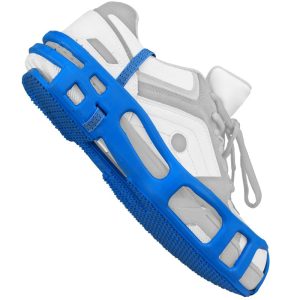 Desco has introduced the new stat-A-Rest™ foot grounder. stat-A-REST™ is a new, innovative ESD footwear product. The product employs a unique static dissipation unit-sole securely affixed to the bottom of the user’s footwear through a lightweight elastomer perimeter attachment system.
Desco has introduced the new stat-A-Rest™ foot grounder. stat-A-REST™ is a new, innovative ESD footwear product. The product employs a unique static dissipation unit-sole securely affixed to the bottom of the user’s footwear through a lightweight elastomer perimeter attachment system.
stat-A-REST™ provides a superior footwear solution in ESD-sensitive workplaces over alternatives in the market including strap-type products and ESD shoes. The electrical performance of stat-A-Rest™ footwear is excellent, with values in the mid 107 ohms range for operator resistance-to-ground measurements made using the methods called out in ANSI/ESD STM97.1. stat-A-REST™ foot grounders are made in the United States of America.
- Full-Coverage Foot Grounder with Contact Points on Sole and Heel Area
Converts non-ESD footwear to ESD footwear; choice for when handling more sensitive devices (Human Body Model Class 0A)* - Walking Voltage Generation <50 Volts Tested per ANSI/ESD STM97.2
Easily meets the ANSI/ESD S20.20 < 100 volt peak body voltage requirement for use as an ESD footwear component in personnel grounding footwear / flooring system. - Point-to-Groundable Point Resistance < 1 x 109 ohms
Meets ANSI/ESD S20.20 required limit tested per ANSI/ESD STM97.1, ESD SP9.2, and ESD TR53 - Tear and Chemical Resistant Thermoplastic Elastomer (TPE) Material
Increases the service life of foot grounder. - Non-Marring Material
Will not leave marks on floors (or operator’s shoes); reducing maintenance costs of touching up on floors. - Conductive 8-Strand Nylon Polyester Grounding Tab
Additional conductive material provides reliable connection with operator’s sweat-layer. - Made in the United States of America
This item is stocked in Canton, MA
*Foot grounders must be used with an ESD floor (recommend conductive flooring < 1 x 106 ohms) to create a path-to-ground and minimize charge generation
For additional information, visit the Desco website.
